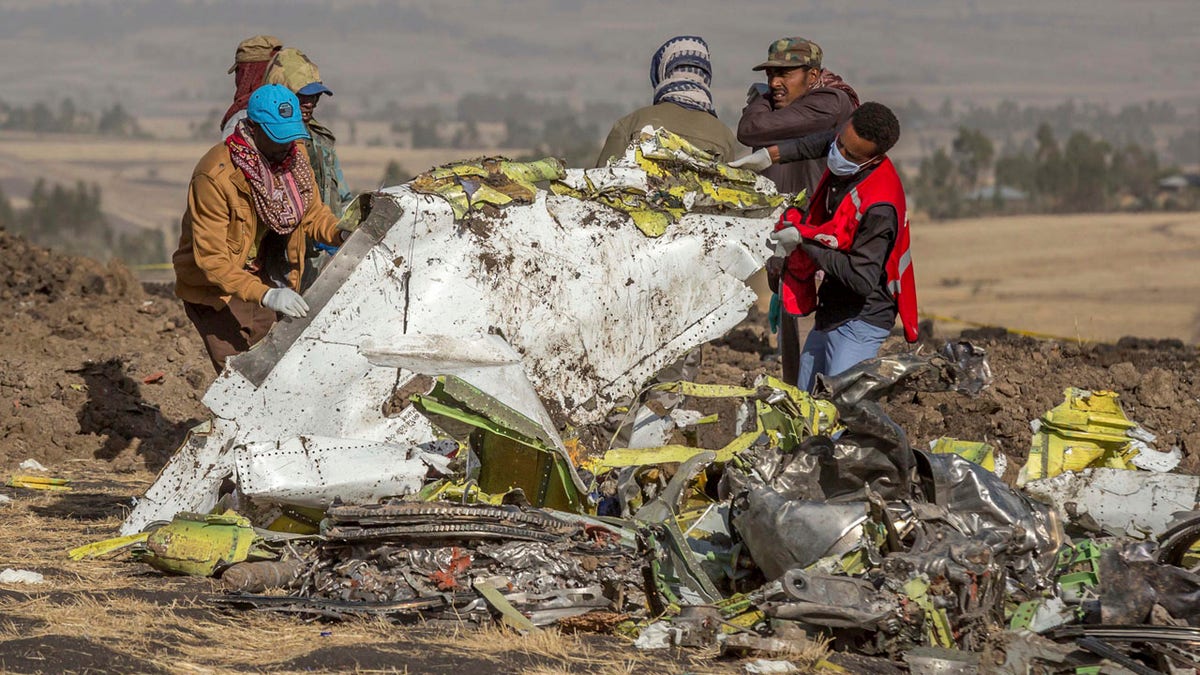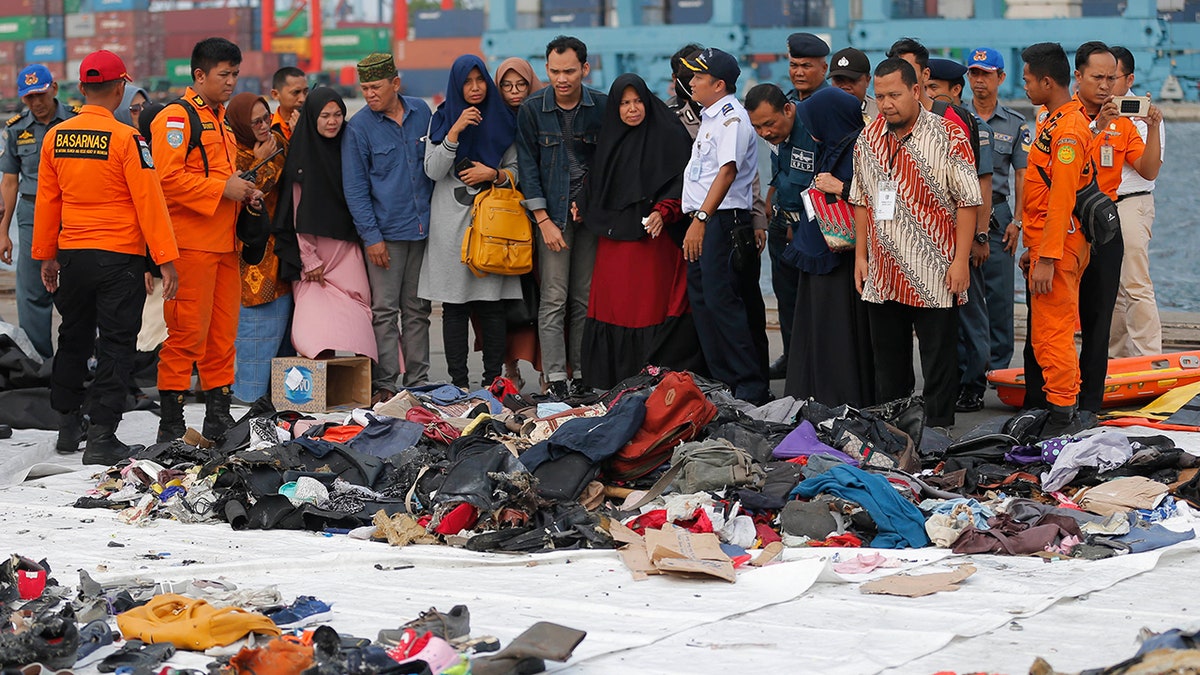
Boeing and the Federal Aviation Administration rushed the approval of the security system in the 737 MAX and overlooked important flaws that may have contributed to the crashes in Indonesia and Ethiopia, according to current and former engineers. Rescuers are pictured here recovering wreckage from the Ethiopian Airlines flight, which crashed on March 10 (AP Photo/Mulugeta Ayene)
Boeing and the Federal Aviation Administration rushed the approval of the security system in the 737 MAX and overlooked important flaws that may have contributed to the deadly crashes in Indonesia and Ethiopia, current and former engineers allege.
An investigation by the Seattle Times included reporters questioning Boeing and the FAA about potentially unsafe practices related to the approval of the controversial Maneuvering Characteristics Augmentation System -- the system that's been at the center of speculation in the Ethiopia crash investigation and the probe of the October crash of a Lion Air jet. The Times said its reporters were pressing officials at both organizations at the beginning of March, mere days before the Ethiopian Airlines crash that killed all 157 people on board.
And, in the days after the crash, distinct similarities have been found between the Ethiopian Airlines crash and that of a Lion Air flight in October 2018, which left 189 people dead. Both planes with 737 MAXs and used the MCAS safety system, which, in a bid to stop a flight from stalling above the clouds, pushes a plane's nose down if a safety sensor detects pushing the plane's nose up.
Numerous current and former engineers said that because of a lack of funding and manpower, the FAA was increasingly delegating elements of the MCAS safety approval process to members of Boeing, to scrutinize the safety of their own planes. In addition, engineers reported feeling pressured to approve the subsequent safety reports quickly in order to keep up with deadlines -- and especially to remain competitive with Boeing's rival, Airbus.
“There was constant pressure to re-evaluate our initial decisions,” one former engineer said, according to the Seattle Times. “And even after we had reassessed it...there was continued discussion by management about delegating even more items down to the Boeing Company.”
Initial safety reports said that the MCAS system would allow the tail to move 0.6 degrees at the most, which would allow a 5 degree nose-down movement of the plane. However, after the Lion Air crash in October, Boeing provided information about the MCAS to airlines for the first time, and indicated that the tail could move 2.5 degrees, substantially changing the degree to which the plane would make a nose-down movement.

In the days following the crash, distinct similarities have been found between the Ethiopian Airlines crash and that of a Lion Air flight in October 2018, which left 189 people dead. Both planes with 737 MAXs and used the MCAS safety system. Mourners are pictured here remembering loved ones at the location where the Lion Air flight is believed to have crashed (AP Photo/Tatan Syuflana, File)
Each time the MCAS is triggered, it can be overridden by a pilot. However, the MCAS can reset itself each time, too, which allows it "unlimited authority," one current FAA safety engineer said, according to the Seattle Times.
The Times also revealed that 737 pilots were not informed about the implementation of MCAS to their planes. Boeing decided that because the system was only supposed to operate in extreme circumstances, the pilots needed no additional training, and information about MCAS was not added to their flight manuals.
Black box data recovered from the Lion Air crash indicated the MCAS had reset itself 21 times, repeatedly pushing the plane's nose down.
Investigators also recovered the jackscrew of the Ethiopian plane, which moves the plane's tail horizontally, and found that it was in an "unusual" position, the Seattle Times reported.
CLICK HERE TO GET THE FOX NEWS APP
The Ethiopian crash prompted dozens of countries and airlines to ground 737 MAX planes pending a detailed analysis of the safety features.
On Sunday, Ethiopian Minister of Transport said the "similarities" between the Indonesian and Ethiopian crashes would be "subject to further investigation."
In response, Boeing said the company "continues to support the investigation, and is working with the authorities to evaluate new information as it becomes available."




















